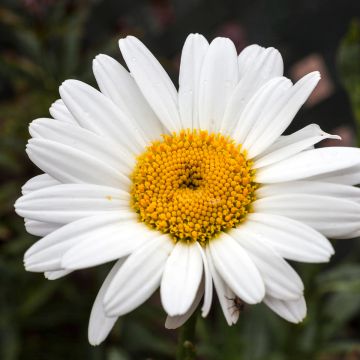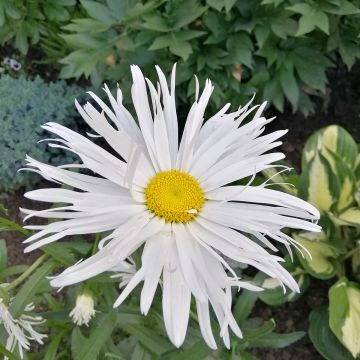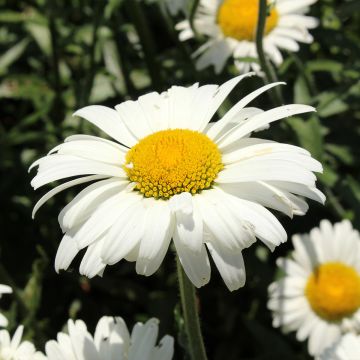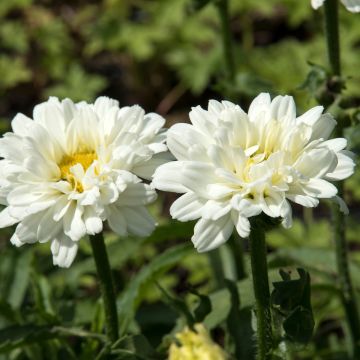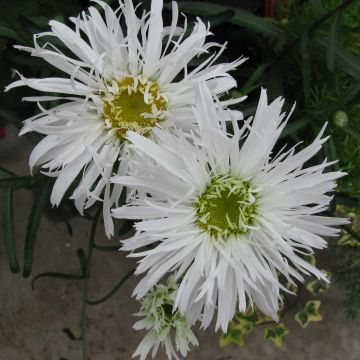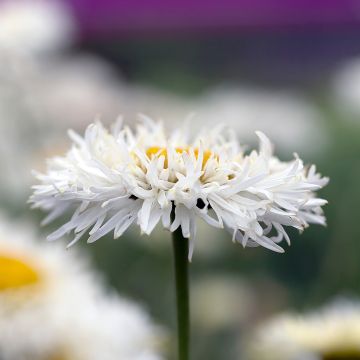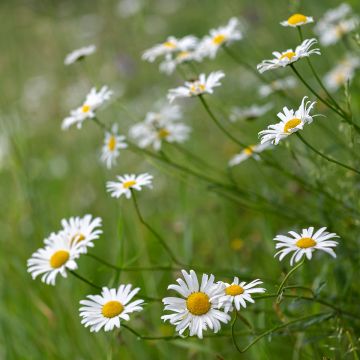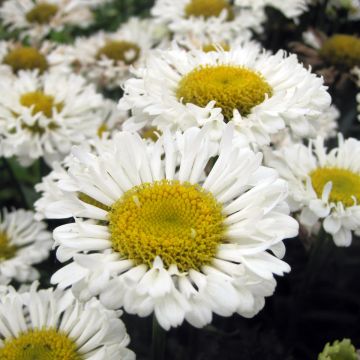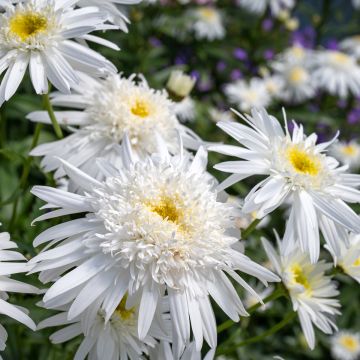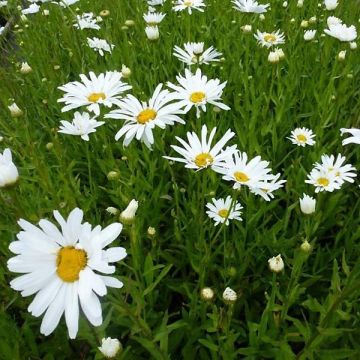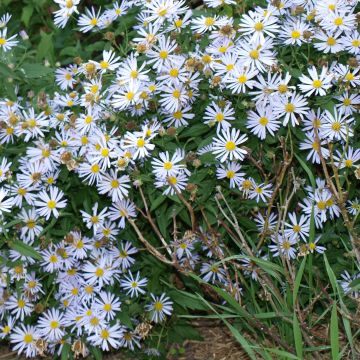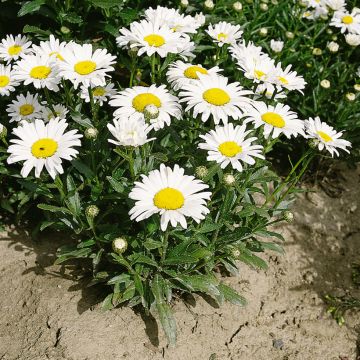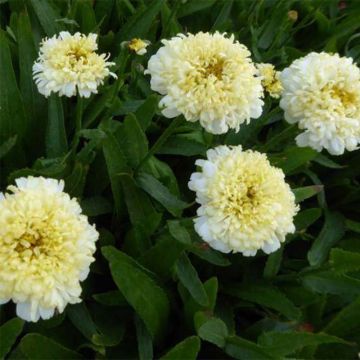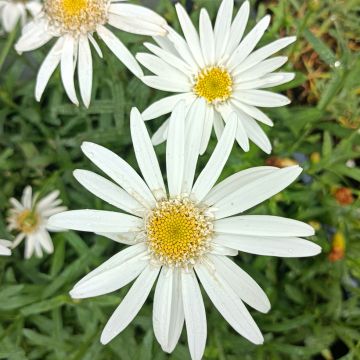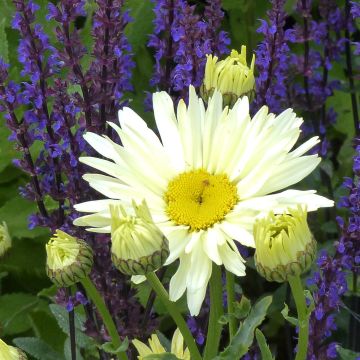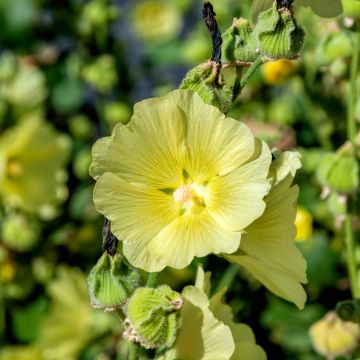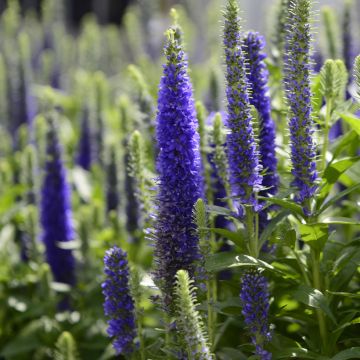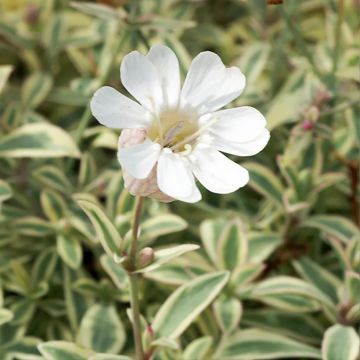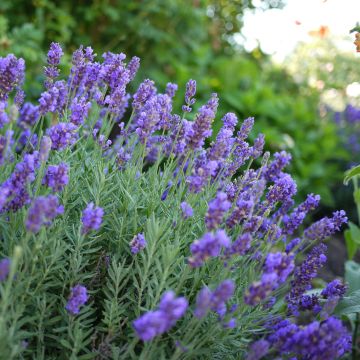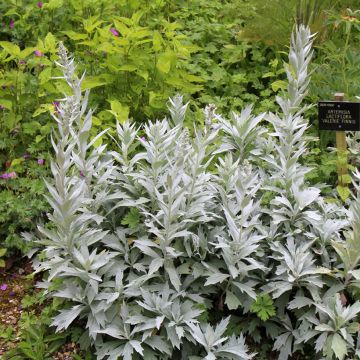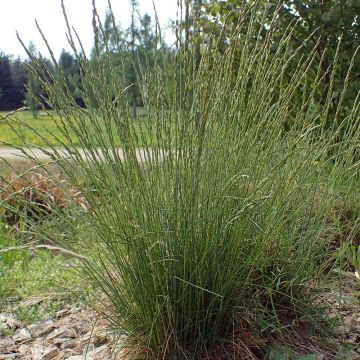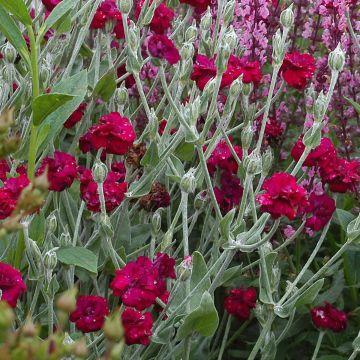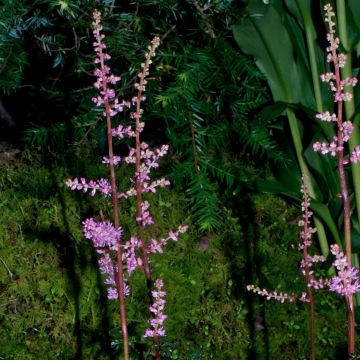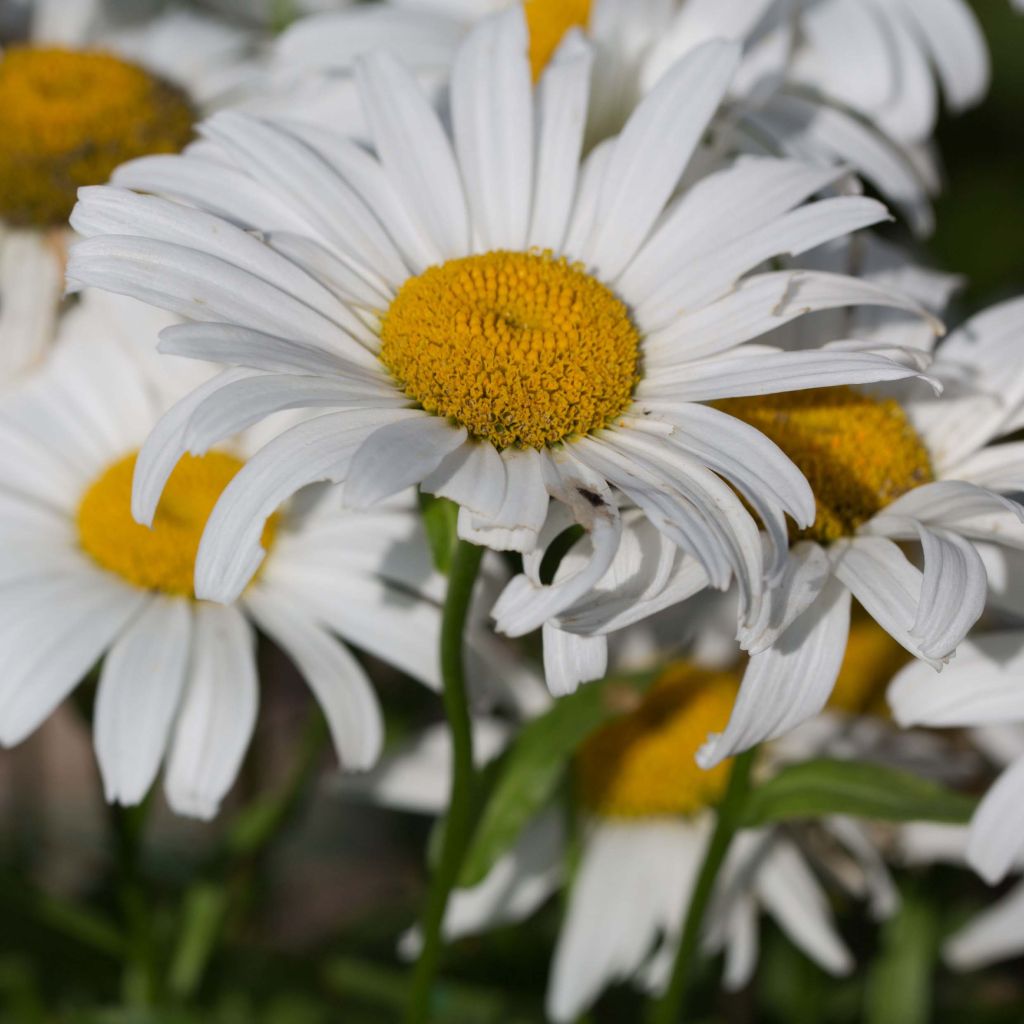

Leucanthemum superbum Snow Lady - Shasta Daisy
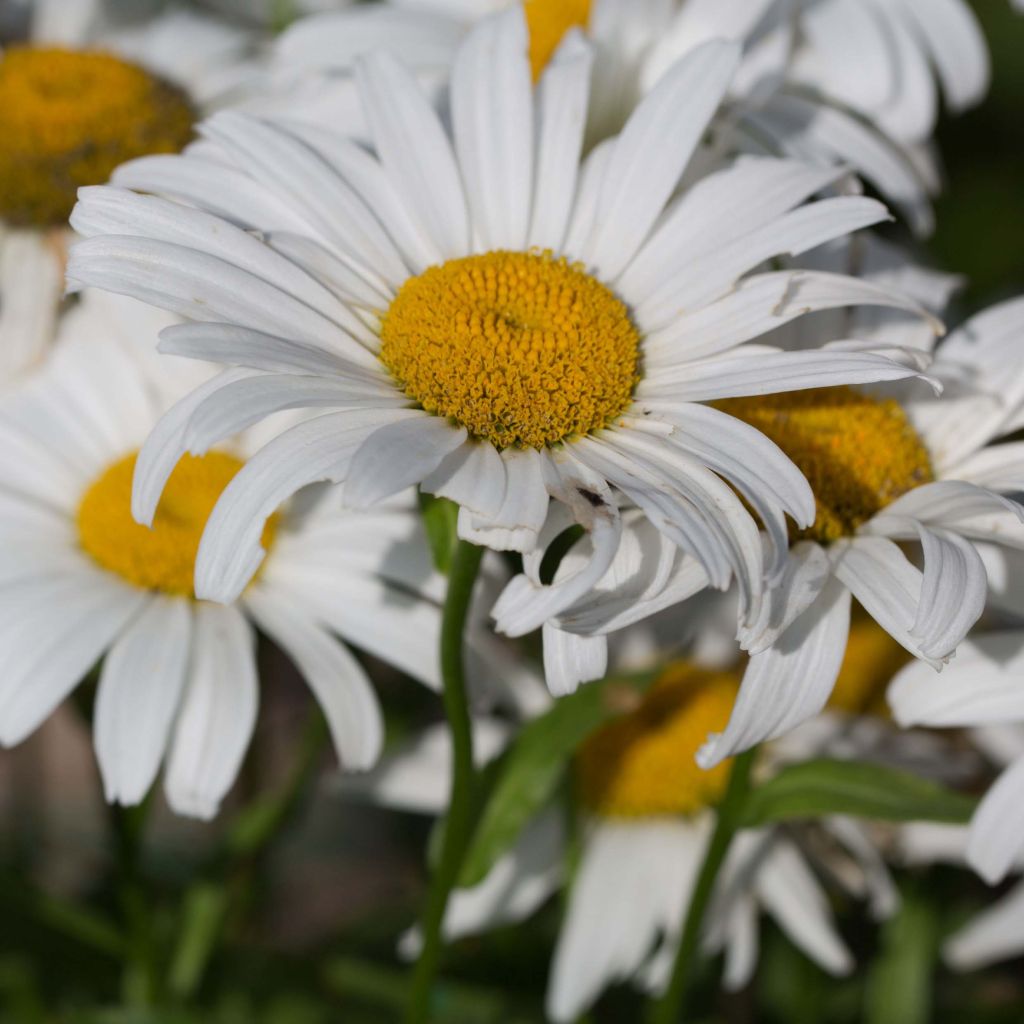

Leucanthemum superbum Snow Lady - Shasta Daisy
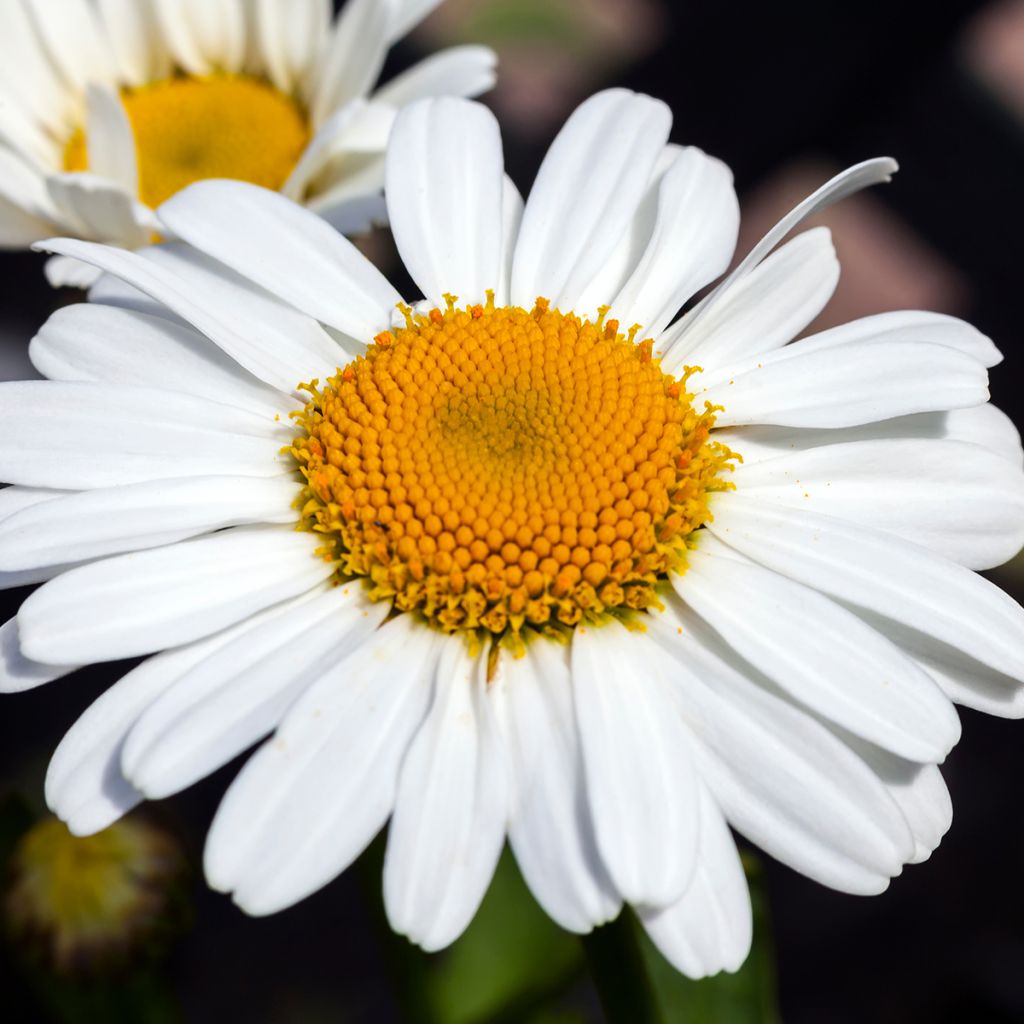

Leucanthemum superbum Snow Lady - Shasta Daisy
Leucanthemum superbum Snow Lady - Shasta Daisy
Leucanthemum x maximum Snow Lady
Shasta Daisy
Received my neck in very good condition. Very satisfied with this magnificent cordate Daisy. The best thing is that it goes very well with the gaillardes, including the cordate Gaillarde Mesa Bright Bicolor and the Maxima aurea. I thank Promesse de Fleurs for the specific research area and kindness during an order. Always satisfied with my orders from you.
Christian, 05/06/2020
Why not try an alternative variety in stock?
View all →This plant carries a 12 months recovery warranty
More information
We guarantee the quality of our plants for a full growing cycle, and will replace at our expense any plant that fails to recover under normal climatic and planting conditions.
From €5.90 for pickup delivery and €6.90 for home delivery
Express home delivery from €8.90.
Does this plant fit my garden?
Set up your Plantfit profile →
Description
Leucanthemum x superbum 'Snow Lady' is a low-growing variety of the large daisy that we have always loved, with large, simple flowers, white with a yellow centre, carried by a very compact plant that is easy to place and resistant to wind. This hardy and sturdy perennial forms a beautiful clump of stems and dark leaves, which is very floriferous in summer, and brings joy to pollinating insects. A very easy to grow plant, for sun or partial shade, delightful in borders and bouquets. It is also an excellent variety for the patio or balcony.
The genus Leucanthemum belongs to the aster family. 'Snow Lady' is a horticultural hybrid obtained from Leucanthemum x superbum, the well-known large daisy. This variety forms a small bushy clump, as tall as it is wide, measuring approximately 35 cm (14in) in all directions, with a moderately rapid growth rate. It forms a dense bunch of leafy stems from a large basal rosette. The flowering period is from June to August, provided that faded flowers are regularly removed and the soil remains somewhat moist. It takes the form of solitary flowers or heads, 6 cm (2in) in diameter, with thin, flat white ligules arranged in a simple crown around a golden yellow centre. The leaves are long, dark green, simple and alternate. They are lanceolate with a regularly dentate edge, almost fleshy. Their surface is smooth. The plant reaches full maturity in five years and can live for many years. Its above-ground, deciduous growth occurs in spring and almost disappears in winter.
This little Snow Lady Daisy will be perfect in a border of a meadow-like bed or in a natural garden, in a flower meadow beneath fruit trees or at the back of the garden. And its small size is perfectly suited for container gardening. While we're not talking about extravagant colours here, we should emphasize the consistency, robustness and abundant flowers of these plants that will bring real structure to low borders, edges, as well as damp rockeries. To accompany its flowering, consider Echinaceas, pair it with asters, perennial flax, thistles (Echinops), peonies, blue lupins, or bellflowers. Be creative with this flower, in the garden or in a vase in the house, to produce a delightful and unique display.
Report an error about the product description
Leucanthemum superbum Snow Lady - Shasta Daisy in pictures


Flowering
Foliage
Plant habit
Botanical data
Leucanthemum
x maximum
Snow Lady
Asteraceae
Shasta Daisy
Cultivar or hybrid
Other Leucanthemum - Marguerite
Planting and care
Plant the Shasta Daisy 'Snow Lady' in deep, loose, humus-rich, and moist soil. For fine drainage, add some loamy sand to the planting substrate. This plant does not have any specific requirement for soil pH, it tolerates both limestone and acidity. It will thrive in a sunny position, and can tolerate partial shade in hot regions. It can withstand temperatures as low as -20°C (-4°F). Clean the plant in spring to remove dead foliage. This daisy can be attacked by aphids, snails, and can develop foliar spots. Make sure to plant it in well-drained soil. Divide it every 3 to 4 years maximum to maintain its vigour.
Planting period
Intended location
Care
-
, onOrder confirmed
Reply from on Promesse de fleurs
Summer flowering perennials
Haven't found what you were looking for?
Hardiness is the lowest winter temperature a plant can endure without suffering serious damage or even dying. However, hardiness is affected by location (a sheltered area, such as a patio), protection (winter cover) and soil type (hardiness is improved by well-drained soil).

Photo Sharing Terms & Conditions
In order to encourage gardeners to interact and share their experiences, Promesse de fleurs offers various media enabling content to be uploaded onto its Site - in particular via the ‘Photo sharing’ module.
The User agrees to refrain from:
- Posting any content that is illegal, prejudicial, insulting, racist, inciteful to hatred, revisionist, contrary to public decency, that infringes on privacy or on the privacy rights of third parties, in particular the publicity rights of persons and goods, intellectual property rights, or the right to privacy.
- Submitting content on behalf of a third party;
- Impersonate the identity of a third party and/or publish any personal information about a third party;
In general, the User undertakes to refrain from any unethical behaviour.
All Content (in particular text, comments, files, images, photos, videos, creative works, etc.), which may be subject to property or intellectual property rights, image or other private rights, shall remain the property of the User, subject to the limited rights granted by the terms of the licence granted by Promesse de fleurs as stated below. Users are at liberty to publish or not to publish such Content on the Site, notably via the ‘Photo Sharing’ facility, and accept that this Content shall be made public and freely accessible, notably on the Internet.
Users further acknowledge, undertake to have ,and guarantee that they hold all necessary rights and permissions to publish such material on the Site, in particular with regard to the legislation in force pertaining to any privacy, property, intellectual property, image, or contractual rights, or rights of any other nature. By publishing such Content on the Site, Users acknowledge accepting full liability as publishers of the Content within the meaning of the law, and grant Promesse de fleurs, free of charge, an inclusive, worldwide licence for the said Content for the entire duration of its publication, including all reproduction, representation, up/downloading, displaying, performing, transmission, and storage rights.
Users also grant permission for their name to be linked to the Content and accept that this link may not always be made available.
By engaging in posting material, Users consent to their Content becoming automatically accessible on the Internet, in particular on other sites and/or blogs and/or web pages of the Promesse de fleurs site, including in particular social pages and the Promesse de fleurs catalogue.
Users may secure the removal of entrusted content free of charge by issuing a simple request via our contact form.
The flowering period indicated on our website applies to countries and regions located in USDA zone 8 (France, the United Kingdom, Ireland, the Netherlands, etc.)
It will vary according to where you live:
- In zones 9 to 10 (Italy, Spain, Greece, etc.), flowering will occur about 2 to 4 weeks earlier.
- In zones 6 to 7 (Germany, Poland, Slovenia, and lower mountainous regions), flowering will be delayed by 2 to 3 weeks.
- In zone 5 (Central Europe, Scandinavia), blooming will be delayed by 3 to 5 weeks.
In temperate climates, pruning of spring-flowering shrubs (forsythia, spireas, etc.) should be done just after flowering.
Pruning of summer-flowering shrubs (Indian Lilac, Perovskia, etc.) can be done in winter or spring.
In cold regions as well as with frost-sensitive plants, avoid pruning too early when severe frosts may still occur.
The planting period indicated on our website applies to countries and regions located in USDA zone 8 (France, United Kingdom, Ireland, Netherlands).
It will vary according to where you live:
- In Mediterranean zones (Marseille, Madrid, Milan, etc.), autumn and winter are the best planting periods.
- In continental zones (Strasbourg, Munich, Vienna, etc.), delay planting by 2 to 3 weeks in spring and bring it forward by 2 to 4 weeks in autumn.
- In mountainous regions (the Alps, Pyrenees, Carpathians, etc.), it is best to plant in late spring (May-June) or late summer (August-September).
The harvesting period indicated on our website applies to countries and regions in USDA zone 8 (France, England, Ireland, the Netherlands).
In colder areas (Scandinavia, Poland, Austria...) fruit and vegetable harvests are likely to be delayed by 3-4 weeks.
In warmer areas (Italy, Spain, Greece, etc.), harvesting will probably take place earlier, depending on weather conditions.
The sowing periods indicated on our website apply to countries and regions within USDA Zone 8 (France, UK, Ireland, Netherlands).
In colder areas (Scandinavia, Poland, Austria...), delay any outdoor sowing by 3-4 weeks, or sow under glass.
In warmer climes (Italy, Spain, Greece, etc.), bring outdoor sowing forward by a few weeks.

































